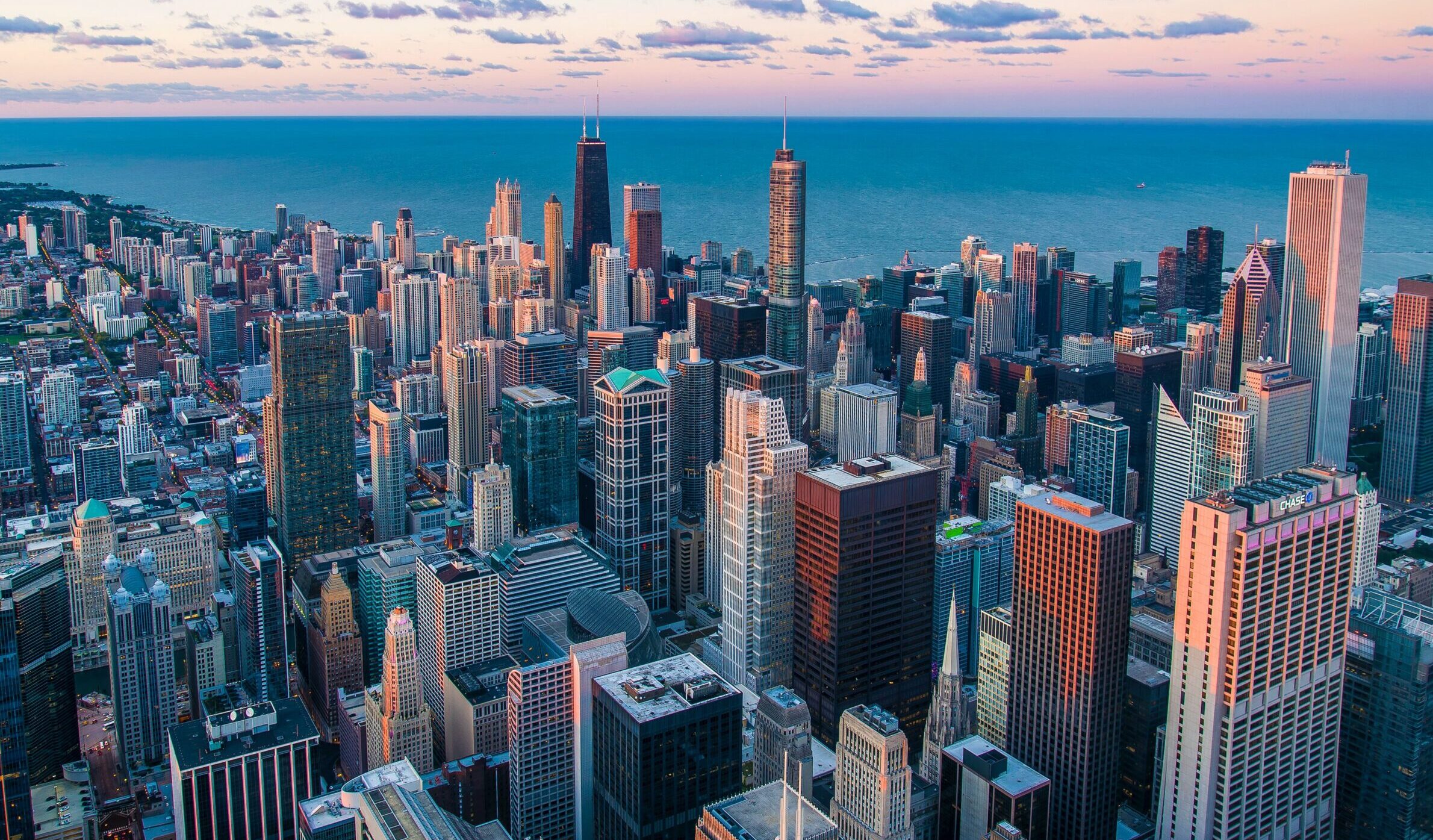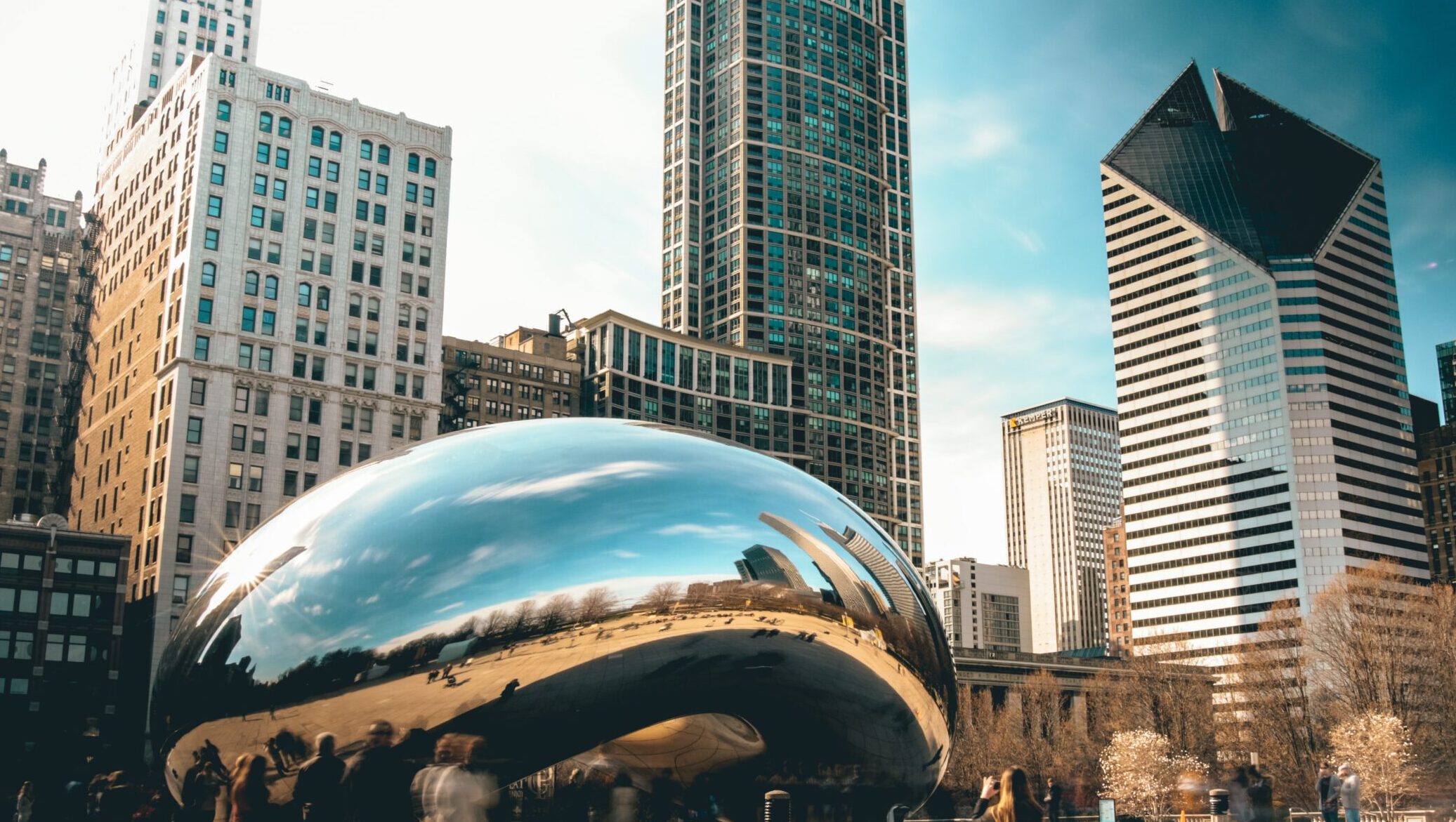Chicago: a city known for its breathtaking skyline, deep-dish pizza, and iconic sports teams. But behind this modern metropolis lies a rich history that shaped its very foundations. From humble beginnings to devastating disasters, Chicago’s story is one of resilience and reinvention. So join us as we delve into the captivating journey of this bustling city – from its founding to present-day glory! Get ready to be captivated by the incredible tale of Chicago’s rise from the ashes!
The founding of Chicago
In the early 1800s, a small settlement began to emerge at the southwestern tip of Lake Michigan. It was here that Jean Baptiste Point du Sable, a Haitian-French fur trader, established his trading post and became known as the “Founder of Chicago.” This modest outpost attracted settlers from all walks of life – traders, explorers, and adventurers seeking new opportunities in this untamed frontier.
As word spread about the strategic location of this growing village – situated between the Great Lakes and the Mississippi River – more people flocked to its shores. In 1837, Chicago was officially incorporated as a city. Its rapid growth can be attributed to its proximity to waterways and railways, which facilitated trade and transportation.

The city’s name itself is derived from an indigenous word meaning “wild onion” or “skunk cabbage,” reflecting its original landscape. However, over time, it shed its wilderness image to become a bustling hub of commerce and industry.
Chicago’s early years were marked by ambition and innovation. The construction of the Illinois & Michigan Canal in 1848 further solidified its importance as a transportation center for goods flowing between East Coast markets and emerging western territories.
While initially known for its meatpacking industry and grain trading, Chicago quickly diversified into manufacturing sectors like steel production and machinery manufacturing. This economic boom led to an influx of immigrants looking for work in factories that dotted the urban landscape.
Though faced with challenges such as labor strikes and social inequality during these formative years, Chicago continued to evolve into an economic powerhouse with soaring skyscrapers rising higher each year.
And so it was that from humble origins on the banks of Lake Michigan emerged one of America’s most influential cities: vibrant Chicago – forever etched in history for defying expectations while embracing progress!
The Great Chicago Fire
The Great Chicago Fire, a devastating event in the city’s history, took place in October 1871. It started on a Sunday evening in a small barn belonging to Patrick and Catherine O’Leary. The fire quickly spread due to strong winds and dry conditions, engulfing entire blocks of wooden buildings.
As the flames raged through the city, chaos ensued. People scrambled to escape their homes, while firefighters struggled to contain the inferno. Despite their efforts, the fire burned for three days before finally being extinguished.
The destruction caused by the Great Chicago Fire was immense. More than 17,000 structures were destroyed and approximately 300 people lost their lives. The aftermath left thousands homeless and led to widespread economic hardship.
However, amidst this tragedy emerged resilience and determination from the people of Chicago. They united to rebuild their beloved city from ashes into what would eventually become one of America’s greatest metropolises.

Despite its devastation, some positive changes resulted from the Great Chicago Fire. Improved building codes were implemented with an emphasis on fire safety measures such as stone construction and wider streets.
Today, reminders of this historic event can still be seen throughout Chicago – from commemorative plaques marking significant locations to stories passed down through generations.
The rebuilding of Chicago
After the devastating Great Chicago Fire of 1871, the city was left in ruins. But true to its resilient spirit, Chicago rose from the ashes and embarked on a remarkable rebuilding journey.
With an influx of architects and engineers from around the world, Chicago became a canvas for innovative design and construction techniques. Skyscrapers began to dot the skyline, showcasing daring feats of engineering that pushed boundaries and captured imaginations.
The city’s commitment to urban planning was evident in projects like Daniel Burnham’s Plan of Chicago, which aimed to create a more efficient and beautiful cityscape. Wide boulevards were laid out, parks were created, and Lake Michigan became an integral part of the city’s identity.
Chicago also embraced its role as a hub for transportation and industry. The construction of railroads connected it to other major cities across America while factories sprang up along its riverbanks. It quickly established itself as a center for trade and commerce.
As time went on, neighborhoods started to flourish with their own unique identities. From vibrant ethnic enclaves like Chinatown and Little Italy to diverse cultural hubs like Bronzeville, each neighborhood contributed to Chicago’s rich tapestry.
Today, when you stroll through downtown or explore its various neighborhoods, you can still see remnants of this rebuilding era – iconic buildings like Willis Tower (formerly known as Sears Tower) standing tall alongside modern architectural marvels such as Cloud Gate (affectionately known as “The Bean”).
The rebuilding process was not without challenges or setbacks but it is what makes Chicago so extraordinary – its ability to rise above adversity with determination and innovation. And so today we continue honoring our past while embracing progress because that is what has shaped this incredible city into what it is today – one that truly embodies resilience,renewal,and reinvention at every turn
20th century Chicago
The 20th century was a pivotal time in the history of Chicago, as the city experienced rapid growth and significant changes. With the dawn of the new century, Chicago emerged as a major center for industry, commerce, and culture.
During this time period, Chicago became known as the birthplace of modern architecture with iconic skyscrapers such as the Willis Tower (formerly known as Sears Tower) dominating its skyline. The city also played a crucial role in shaping American literature and art through its vibrant cultural scene.
In addition to its architectural and artistic achievements, Chicago faced numerous challenges throughout the 20th century. The city witnessed social unrest during periods of economic downturns and racial tensions. However, it also saw moments of progress with influential figures like Harold Washington becoming Chicago’s first African-American mayor.
Furthermore, sports played an integral part in shaping Chicago’s identity during this era. From baseball legends such as Babe Ruth visiting Wrigley Field to Michael Jordan leading the Bulls to six NBA championships in the 1990s, sports united fans across generations.
As technology advanced, transportation systems were improved with innovations like elevated trains (known as “L” trains) connecting different neighborhoods within the city.
The story of 20th century Chicago is one marked by resilience and transformation. Despite facing various obstacles along the way,
Chicago continued to evolve into a dynamic metropolis that thrived on innovation while preserving its rich heritage.
21st century Chicago

As we step into the 21st century, Chicago continues to thrive and evolve. The city has embraced its rich history while also embracing modern innovation and progress.
Chicago‘s skyline is ever-changing, with new architectural marvels constantly being added to the iconic cityscape. From the sleek lines of Millennium Park to the towering heights of Willis Tower (formerly known as Sears Tower), Chicago remains a hub of architectural excellence.
The city’s cultural scene is thriving as well. Renowned museums like the Art Institute of Chicago continue to showcase world-class art collections, while theaters and music venues draw in crowds for unforgettable performances.
In recent years, Chicago has also become a center for technology and entrepreneurship. Start-up companies are flourishing, fueling job growth and opportunities in various sectors. Additionally, initiatives aimed at sustainability have made strides in making Chicago a greener and more environmentally friendly place to live.
However, like any other major city, challenges persist. Crime rates remain an ongoing concern for residents and local authorities alike. Efforts are being made to address these issues through community engagement programs and increased police presence.
Despite these challenges, one thing remains constant – the resilience and spirit of the people of Chicago. Their determination has carried them through different eras of change throughout history, shaping this remarkable city into what it is today.
From its humble beginnings as a small trading post on Lake Michigan to its rise as one of America’s greatest cities, Chicago stands tall as a testament to human ambition and ingenuity.
So next time you find yourself strolling along Navy Pier or taking in breathtaking views from atop Skydeck Chicago don’t just admire its beauty – take a moment to appreciate all that this incredible city has endured over time!
